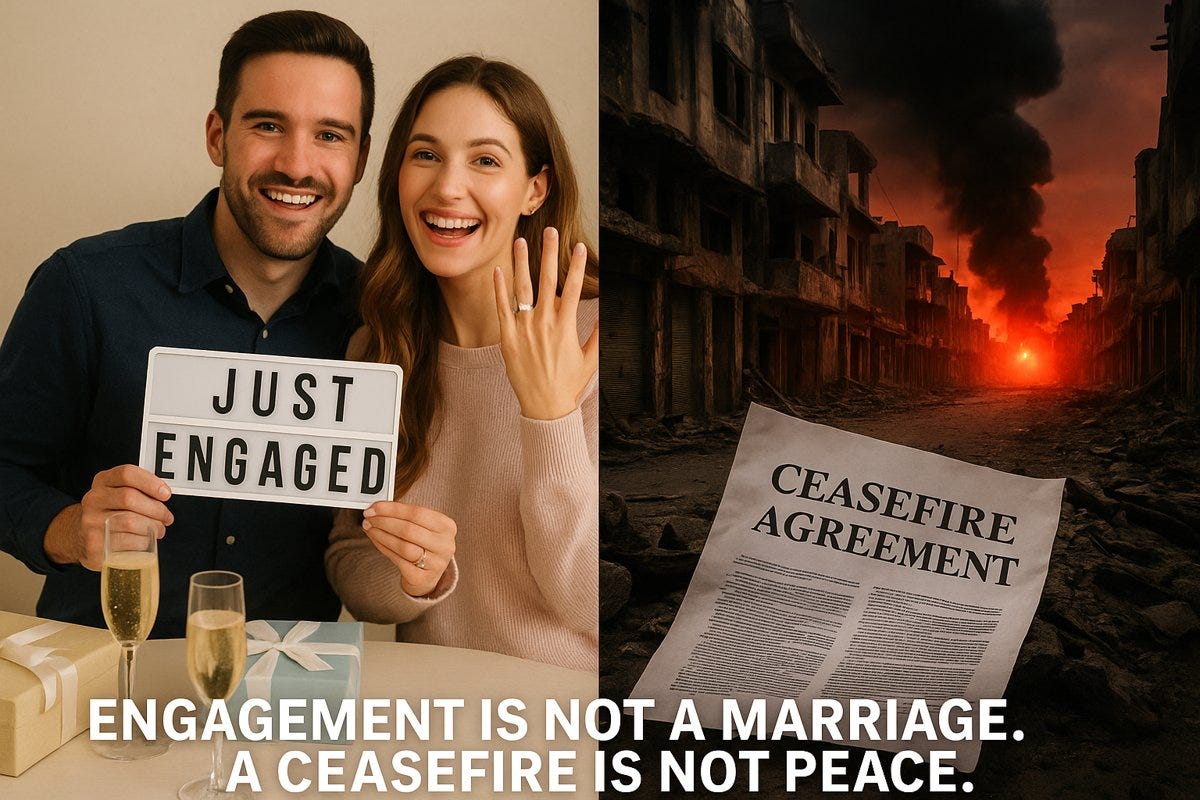✍️ A Ceasefire Is Like an Engagement
But peace, like marriage, takes more than good intentions.
Ceasefires can feel like turning points. Like hope. Like progress. They’re the moments we breathe a little easier, imagining an end to rockets, gunfire, destruction, death.
But let’s not fool ourselves.
A ceasefire is like an engagement. It’s a big step, sure. But it’s not the finish line. It’s not the marriage. It’s not peace.
An engagement says, We’re headed in the right direction. We hope this works out. It’s a promise with conditions. And so is a ceasefire.
Both can be broken with a single act of mistrust. Both can end in flames—with gifts returned, plans canceled, hearts shattered. Or worse.
We’ve seen it happen before—at the altar and on the world stage.
Just ask the people of Gaza and Israel. Or the Koreans who live in a 70-year limbo under an armistice. Or the Vietnamese, who endured the failure of peace after the 1973 Paris Accords.
Or the many civilians who have been told peace is coming—only to watch their cities burn again.
Still, when a ceasefire is declared, the world often cheers. Sometimes, someone even hands out a Nobel Peace Prize. But the wedding hasn’t happened yet.
Hope is vital. But hype is dangerous.
Ceasefires and engagements are not goals. They are openings. Opportunities.
They require ongoing effort, trust-building, hard conversations, and honesty. And in the case of war and peace, they demand confronting history, not avoiding it.
Symbolic gestures aren’t enough. The world must support the difficult work of peacemaking, not just applaud the announcement of a ceasefire and move on.
So yes, celebrate the pause. Take a breath. Feel the relief.
But don’t mistake a promise for a solution. Because if the ceasefire disengages, the rockets glare red again.
And peace deserves more than a promise. It deserves a commitment.



Having DJT push Israel and Iran into a cease fire doesn’t give me hope that it will last. I hope but am not hopeful If that makes any sense.